In recent years, with the advantages of increased light efficiency, low energy consumption, high reliability, long life, small size and environmental protection, LEDs are increasingly used in automotive interior and exterior lighting, and have been used from less critical automotive lighting applications. Such as cockpit lighting, parking lights and dashboard backlights, spanning a wider range of applications such as headlamps and combined taillights. In particular, due to its small size, LEDs can be combined with a wide variety of shapes and lines to help enhance the recognition of the lights. They are specified for the headlight system of many medium and high-end cars, with a beautiful appearance design. Figure 1 shows a typical automotive LED lighting application today.
This article refers to the address: http://
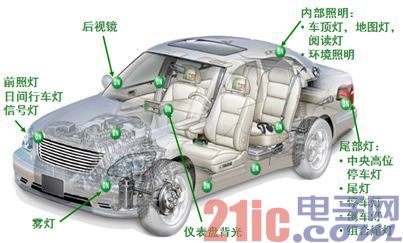
Figure 1: Typical automotive LED lighting applications.
Automotive LED lighting - not only beautiful, but also promotes active safety of the car
The intuitive benefits of LED lighting to the car are not limited to beautiful shapes. According to the National Highway Traffic Safety Administration (NHTSA) and the European Commission (EC), although only 25% of driving is during nighttime and lack of light, 40% of deaths and serious injuries occur during this time. Therefore, improving the lighting of automobiles, especially at night and under light conditions, can help improve the active safety of the car. In fact, in order to protect the safety of drivers/cars/roadside pedestrians, the industry has long been committed to developing various automotive lighting solutions, such as adaptive headlamps (AFS) solutions for improving nighttime cornering, and Daytime running light (DRL) program for improving daytime driving safety.
Compared to incandescent lamps and high-intensity discharge lamps (HID), which are traditionally used in automotive lighting, LEDs have unparalleled advantages for automotive lighting. If the LED response time is short, the brake light can increase the braking distance of the rear car, and the steering light has a better warning effect. The brightness of the LED is high, but it is not as dazzling as HID, which helps to reduce the risk of dazzling the driver of the opposite car. LED lamps consume much less energy than incandescent lamps or HIDs, helping to reduce fuel consumption and save money.
Typical automotive lighting application LED driver solution
Different automotive lighting applications have different requirements for LED current, so it is necessary to select a suitable LED driver solution according to specific application requirements. Typical LED driver solutions include resistors, linear constant current regulators, linear regulators, and switching regulators.
Among them, the resistor is the simplest and lowest cost LED current limiting scheme, but the energy efficiency is also the lowest, and there are problems such as LED screening cost and thermal runaway. Constant current regulator (CCR) performance is higher than the resistor scheme, but the cost is lower than the linear or switching regulator scheme, suitable for low current LED lighting applications. The linear regulator supports multiple lines in parallel configuration to help dissipate heat, providing ±2% steady current accuracy, no electromagnetic interference (EMI) problems, medium cost, but low energy efficiency. Switching regulators are widely used. This solution is more costly and more complex, but supports any type of input voltage vs. output voltage, and energy efficiency can be higher than 90% depending on input/output conditions, but there are EMI issues.
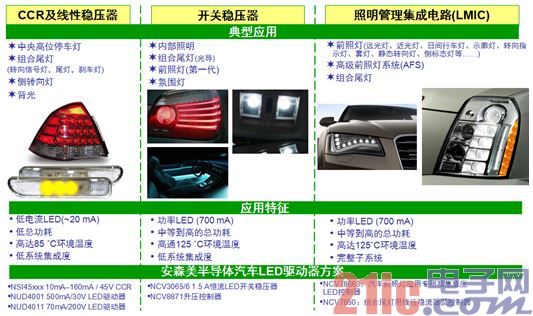
Figure 2: Typical Automotive Lighting Applications and LED Driver Solutions
In addition to these solutions, ON Semiconductor also introduced a highly integrated LED Lighting Management Integrated Circuit (LMIC). These LMICs integrate a variety of LED drive and control functions, equivalent to a complete subsystem that can withstand ambient temperatures up to 125 ° C for automotive headlamps, combined taillights and the latest AFS applications.
Full LED headlamp application requirements and highly integrated drive solutions
In 2008, the Audi R8 used the full LED headlamp for the first time. The full LED headlamps include modules such as low beam, high beam, turn signals and daytime running lights, each with a different number of LEDs. According to research and consulting services company SNE Research, the penetration rate of LED headlamps in the global automotive market in 2013 was less than 5%, but it is expected to exceed 50% by 2020, showing that the growth prospects are considerable.
However, full LED headlamps place higher demands on the drive scheme, requiring energy-efficient integrated drivers that support different configurations from single LEDs to multiple strings of LEDs (up to 60 V) and pulse width modulation (PWM) dimming. Such as for a position light. All-LED headlamps also require LED strings to have low EMC emissions, and require various aspects such as heat dissipation, diagnostics, and communication interfaces.
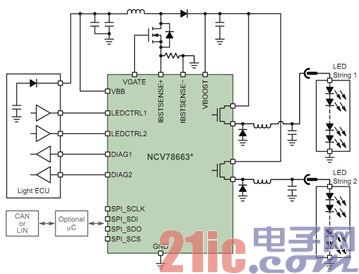
Figure 3: Application circuit diagram of ON Semiconductor's single-chip smart headlamp LED driver NCV78663.
With the full LED headlamp drive requirements, ON Semiconductor has introduced the NCV78663 single-chip energy-efficient smart power ballast and dual LED driver system-on-chip (SoC) for advanced LED headlamp systems. With a buck-boost topology that provides more than 90% total energy efficiency, the NCV78663 is a highly integrated solution that enables designers to control high beam and low beam, daytime running lights with a single SoC , turn indicator lights and fog lights. The NCV78663 is ideal for driving high current LEDs (up to 2 A) and supports PWM dimming to maintain LED color temperature and average current control. The NCV78663 provides a complete drive solution for two strings of LEDs driving up to 60 V with two built-in independent buck switching channels with a minimum number of external components. Each channel can be tailored to the output current and voltage via the SPI interface and/or OTP settings, depending on the application requirements. The device provides automotive headlamp diagnostics on-chip and an integrated boost controller that provides designers with a unique input current filter with a limited number of external components. The NCV78663 can be used stand-alone or in combination with a microcontroller for maximum flexibility. This solution is derived from the lower EMC of the battery and the lower EMC of the radiation to the LED string.
ON Semiconductor's NCV78663 full LED headlamp driver has been adopted by the Mercedes-Benz E-Series, which uses up to six NCV78663s in its advanced headlamp system and up to three ON Semiconductor NCV70522 stepping motor driver.
ON Semiconductor's latest matrix dynamic intelligent full LED headlamp solution
In recent years, matrix-type dynamic intelligent full LED headlamps have appeared on the market, such as smart LED headlamps equipped with Mercedes-Benz's next-generation S-class cars. The headlamp system contains 56 LEDs, each of which can be lit, extinguished, or adjusted for brightness. The unique features of this light are as follows:
â— Anti-communication vehicle glare: The LED lights, extinguishes or adjusts the brightness according to the data of the front radar and the stereo camera, so as to automatically adjust the illumination range to ensure the sight of the other party and avoid the glare of the other vehicle.
â— Bypassing the front vehicle contour: When encountering a vehicle traveling in the same direction ahead, the front vehicle contour can be bypassed while fully illuminating the left and right side areas of the front vehicle. Therefore, the high beam can be turned on at night to greatly improve driving safety.
â— The pedestrian flashes quickly: The smart headlights can recognize the pedestrians in front and use the headlights to automatically flash quickly to remind pedestrians to avoid danger and reduce the possibility of night accidents.
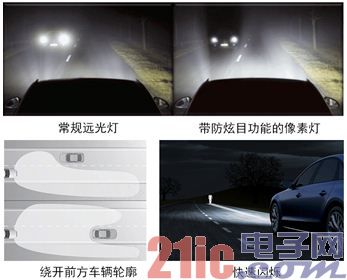
Figure 4: Unique functional representation of the dynamic intelligent full LED headlamp.
Such matrix dynamic intelligent full LED headlamps can be driven in series or in parallel. When using a parallel structure, the difference in electrical characteristics of each LED has a significant impact on the performance of the lighting system, resulting in increased energy consumption and heat dissipation. In a series drive configuration, the LED driver provides a constant current source, and the shorting switch turns off a single LED, allowing the beam to be changed as needed. If a companion chip (pixel controller) is added to the series driver circuit and divided by the system, it is possible to avoid the energy consumption and thermal management problems inherent in the parallel topology.
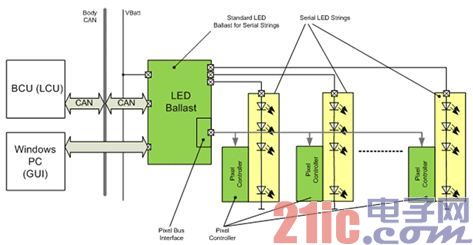
Figure 5a: Schematic diagram of an ON Semiconductor matrix automotive LED headlamp solution.
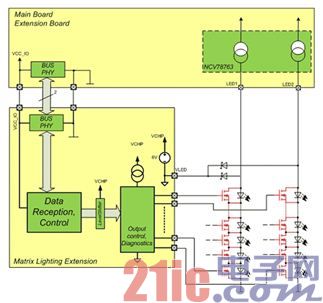
Figure 5b: Schematic diagram of an ON Semiconductor matrix automotive LED headlamp solution (continued).
ON Semiconductor's NCV78763 buck-boost LED driver IC acts as a current source in this matrix dynamic smart full LED headlamp, which complements the integrated pixel controller/companion chip. This modular approach reduces component count and simplifies the application process, thus speeding time to market.
to sum up:
This article introduces the various applications of LED in automotive lighting, analyzes the application advantages of LED, especially the advantages that are now more and more valued to help improve the active safety performance of automobiles, and an overview of the LED driver solutions for typical automotive lighting applications. The latest all-LED automotive headlamps require the ON Semiconductor NCV78663 high-integration LED driver solution, especially in its latest matrix-based intelligent dynamic LED headlamp system.
the power Connectors we provide overmolding solutions and modular tooling.
We also offer to the OEM and distributor users a diversified line of strain / flex reliefs and grommets, such as Solid, Solid-Rib, Uniflex, Multiflex, in standard off the shelf or custom designs.
Overmolding the power connectors offers significant opportunities for cable improvements with higher pull strength not available with conventional backshells. Our technical staff is ready to help you from design and prototyping to small production run, assistance, and training.
Our team is ready to help with any of the following power connectors projects: overmolding mini fit jr. and mini-fit sr. connectors, , overmolded cables with micro fit terminations, sabre molded cable asemblies, amp duac overmolded power connectors, mate-n-lock power cables, power connector overmolding services, power connector molding, design and prototype of power cables across the board, small run molded power connecotrs , molded cable manufacturing, overmolding connectors for any power applications
Strain/flex Reliefs And Grommets
Strain Reliefs And Grommets,Flex Reliefs And Grommets,Cable Strain Reliefs,Cable Flex Reliefs,Cable Grommets,Molded Strain Relief
ETOP WIREHARNESS LIMITED , https://www.etopwireharness.com